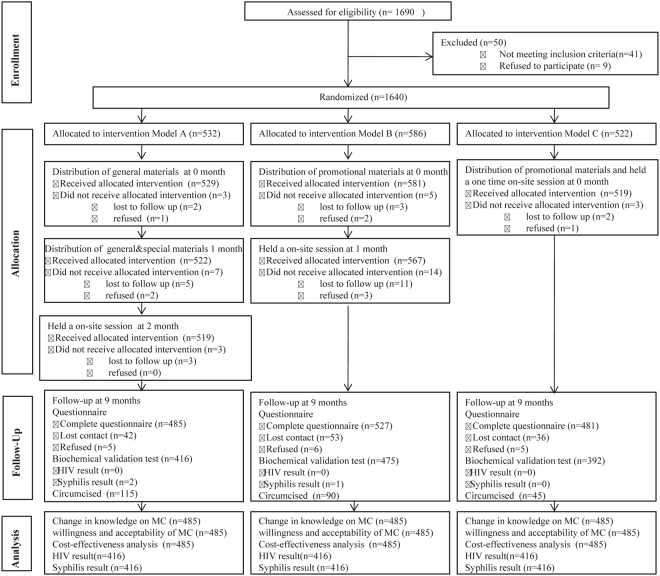Figure 1.
A total of 1690 subjects participated in the initial interview. Of those, 1640 completed the entire interview and were randomly allocated into one of three intervention models. Model A: Delivered all the intervention at 3 stages: distribution of general materials at the initial contact (0 month); distribution of general and special materials within 1 month after the initial contact; held an one-time on-site session that included dissemination of materials and expert- and volunteer-led discussions within 1 month after receiving all the above interventions. Model B: Delivered two intervention performances at 2 stages: distribution of general and special materials at the initial contact (0 month) and held an on-site session that included dissemination of materials and expert- and volunteer-led discussions within 1 month after the initial contact. Model C: Delivered general and special materials and held an one-time on-site session that included dissemination of materials and expert- and volunteer-led discussions at the initial contact (0 month). Changes in knowledge of MC, acceptability of MC, uptake of MC surgery, the cost per acceptance, and HIV/STD infection rate were analyzed at 9-months follow-up visits. For each model, the participants would not have the chance to enter the next intervention if they did not receive allocated intervention, which are included as “lost to follow” or “refused”. Only data generated form participants who completed the entire questionnaire at the 9th month follow-up visit were included in the final analysis.

